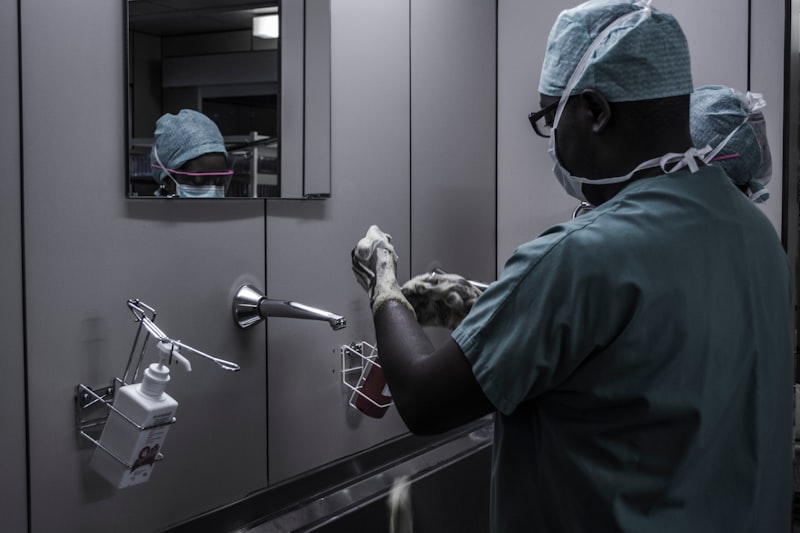Moving forward in time, the medieval period brought forth practices that would make modern patients shudder. Bloodletting, for instance, was a widely accepted treatment across Europe and beyond. Physicians believed that by draining blood, they could rebalance the body’s humors and cure a range of ailments. The practice persisted for centuries, supported by the prevailing medical theories of the time.
In the 19th century, with the advent of electricity, medical practitioners experimented with electrotherapy. One particularly unsettling application involved the use of electric eels to shock patients as a treatment for various nervous disorders. This method, though rooted in the era’s fascination with electricity’s therapeutic potential, often left patients more unnerved than cured.
Another notable entry in the catalog of medical oddities is trepanation, the practice of drilling holes into the skull. Ancient civilizations like the Incas believed that this procedure could release evil spirits or cure illnesses by allowing them to escape. Despite its morbidity, evidence suggests that some patients actually survived this procedure, demonstrating the surprising resilience of the human body.
Reflecting on these practices today, it’s easy to view them with a mixture of astonishment and horror. Yet, each one represented an earnest attempt to alleviate suffering and prolong life in an era often defined by limited medical knowledge. While modern medicine has progressed by leaps and bounds, the strange and sometimes unsettling practices of our medical ancestors remind us of the enduring human quest for health and healing.
From Bloodletting to Mercury: The Shocking Truth Behind Ancient Medical Treatments
Imagine being sick in ancient Egypt or Greece. Instead of heading to a modern hospital, you might find yourself facing a practitioner wielding a sharp tool for bloodletting. Yes, bloodletting involved intentionally bleeding a patient, based on the belief that it could rebalance the body’s humors and cure various ailments. While it might sound like something out of a horror movie today, it was considered a legitimate treatment for centuries.
Moving further back in time to ancient China, the use of acupuncture was prevalent. Thin needles were inserted into specific points on the body to stimulate energy flow and restore health. Despite its ancient origins, acupuncture continues to be used today, albeit with modern scientific scrutiny and understanding.
Meanwhile, ancient Roman medicine included practices that make us cringe today. One notable example is the use of urine for various purposes, including as a mouthwash and even as a disinfectant for wounds. The Romans believed urine had cleansing properties, although we now know better ways to sanitize.
In the Middle Ages, European physicians turned to remedies involving substances like mercury. This toxic metal was thought to cure everything from syphilis to headaches. Little did they know that mercury poisoning was actually making things worse for their patients in the long run.
Looking at these ancient practices, it’s clear that medical knowledge has evolved significantly over time. What was once considered cutting-edge treatment now seems primitive and, in some cases, dangerous. Yet, these practices were born from a genuine desire to heal and alleviate suffering.
Today, we benefit from centuries of medical advancements, scientific research, and evidence-based practices. From antibiotics to advanced surgical techniques, modern medicine continues to push boundaries and save lives. As we reflect on the shocking truths behind ancient medical treatments, we can appreciate just how fortunate we are to live in an era of medicine grounded in science and compassion.
Strange Cures and Torturous Remedies: Medical Practices That Defy Belief
Imagine a time when ailments were believed to be cured by means that today would be considered outlandish. Take, for instance, the ancient practice of bloodletting, where it was thought that by draining blood from the body, various illnesses could be cured. From fevers to headaches, this method was applied across cultures for centuries, despite its often detrimental effects on patients.
Or consider the use of leeches, those slimy, blood-sucking creatures, employed for their supposed healing powers. Used in medieval Europe and even earlier in ancient Egypt, leeches were applied to draw “bad blood” from the body, believed to restore balance and health. Today, leech therapy has made a niche comeback in microsurgery, but its historical context remains unsettling.

Moving beyond blood, medieval physicians also dabbled in the world of urine. Yes, you read that right. Urine was once considered a diagnostic tool and treatment substance. Physicians examined its color, smell, and taste to diagnose diseases and concocted potions that included urine as a key ingredient. This practice, although repulsive to modern sensibilities, persisted for centuries.
Even dental care had its share of peculiar treatments. Take, for example, the use of walrus ivory or animal teeth as primitive dental implants. In the absence of modern materials, early dentists sought ways to restore lost teeth, often resorting to materials that were readily available but far from ideal.

These examples highlight a time when medical knowledge was limited, and superstition often dictated practice. While these practices may seem absurd today, they were born out of genuine attempts to heal and alleviate suffering. They remind us of the progress made in medical science and the importance of evidence-based medicine in our modern world.
The Dark Side of Medicine: Unearthing History’s Most Unsettling Treatments

Take, for instance, the ancient practice of trepanation, where holes were drilled into the skull to release evil spirits believed to cause illness. This gruesome procedure, devoid of anesthesia, reflects a belief system where the physical and spiritual realms intertwined in unsettling ways.
Moving through history, we encounter the use of mercury as a cure-all elixir during the Renaissance. Promoted by physicians like Paracelsus, mercury was believed to balance the body’s humors. However, its toxic effects on the nervous system and kidneys were not understood, leaving a trail of unknowing victims in its wake.
The 19th century brought forth treatments like phrenology, the dubious practice of reading personality traits from the bumps on one’s skull. This pseudo-science, popularized by figures like Franz Joseph Gall, promised insights into the mind but instead perpetuated harmful stereotypes and misguided medical practices.
Even more disturbing are the early experiments with electroconvulsive therapy (ECT) in the 20th century. Initially hailed as a breakthrough in treating mental illness, its early applications lacked precision, often causing severe memory loss and trauma to patients who underwent these shock treatments.
In a world where medical progress is measured by advancements in technology and ethical standards, these historical treatments serve as cautionary tales. They remind us of the importance of rigorous scientific inquiry and ethical considerations in the pursuit of medical knowledge. As we unearth these unsettling chapters from our past, we are prompted to reflect on how far we have come and the responsibility we bear in ensuring that future medical practices prioritize safety, efficacy, and above all, the well-being of those in our care.
Suffering in Silence: Horrifying Medical Procedures Throughout the Ages
Imagine ancient civilizations grappling with the agonizing reality of primitive surgeries. In the absence of anesthesia, patients faced excruciating pain during procedures like trepanation, where holes were drilled into the skull to treat ailments ranging from head injuries to supposed spiritual maladies. This procedure, intended to relieve pressure or release evil spirits, paints a grim picture of early medical practices.

Fast forward to the Middle Ages, an era notorious for its crude and terrifying medical treatments. Bloodletting, believed to balance the body’s humors, involved draining blood from patients through leeches or incisions—a practice that often led to further complications and even death. The suffering of patients, subjected to such agonizing rituals, underscores the desperation of an era striving to comprehend the complexities of the human body.
Moving into the 19th and 20th centuries, medical science made significant strides, yet unsettling practices persisted. Procedures like lobotomies, once hailed as breakthroughs in treating mental illness, left countless patients permanently altered or confined to a lifetime of diminished mental capacity. The era also saw the widespread use of electroconvulsive therapy (ECT) to treat severe psychiatric disorders, a treatment now approached with caution due to its history of misuse and ethical concerns.
Even today, the history of medical procedures serves as a haunting reminder of the lengths humanity has gone to in search of healing. From ancient rituals to modern innovations, each chapter reveals the intricate dance between progress and human suffering. As we look back on these stories, we are left to ponder the cost of medical advancement and the resilience of those who endured unimaginable pain in the name of progress.
Frequently Asked Questions
Why were mercury and arsenic used in medical treatments despite their toxicity?
Discover why mercury and arsenic were historically used in medical treatments despite their known toxicity. Understand the historical context, beliefs about their therapeutic benefits, and the evolution of medical practices over time.
How did medical practices evolve from ancient times to the modern era?
Explore the evolution of medical practices from ancient times to the modern era in this concise FAQ. Learn how ancient civilizations laid the foundation for medical knowledge, leading to breakthroughs in anatomy, surgery, and medical theories over centuries. Discover how advancements in technology, science, and evidence-based medicine have shaped today’s sophisticated healthcare systems.
What role did superstition play in shaping historical medical practices?
Discover the impact of superstition on historical medical practices, influencing treatments and beliefs throughout different periods.
What were some of the most bizarre medical treatments used in ancient civilizations?
Explore the intriguing world of ancient medical practices with a focus on some of the most bizarre treatments civilizations employed. Discover how historical cultures approached medical care in unconventional ways, shedding light on the evolution of healthcare practices over time.
How did bloodletting become a popular medical practice in history?
Discover how bloodletting gained popularity in history as a medical practice, exploring its cultural origins, perceived health benefits, and eventual decline with advancements in medical science.


